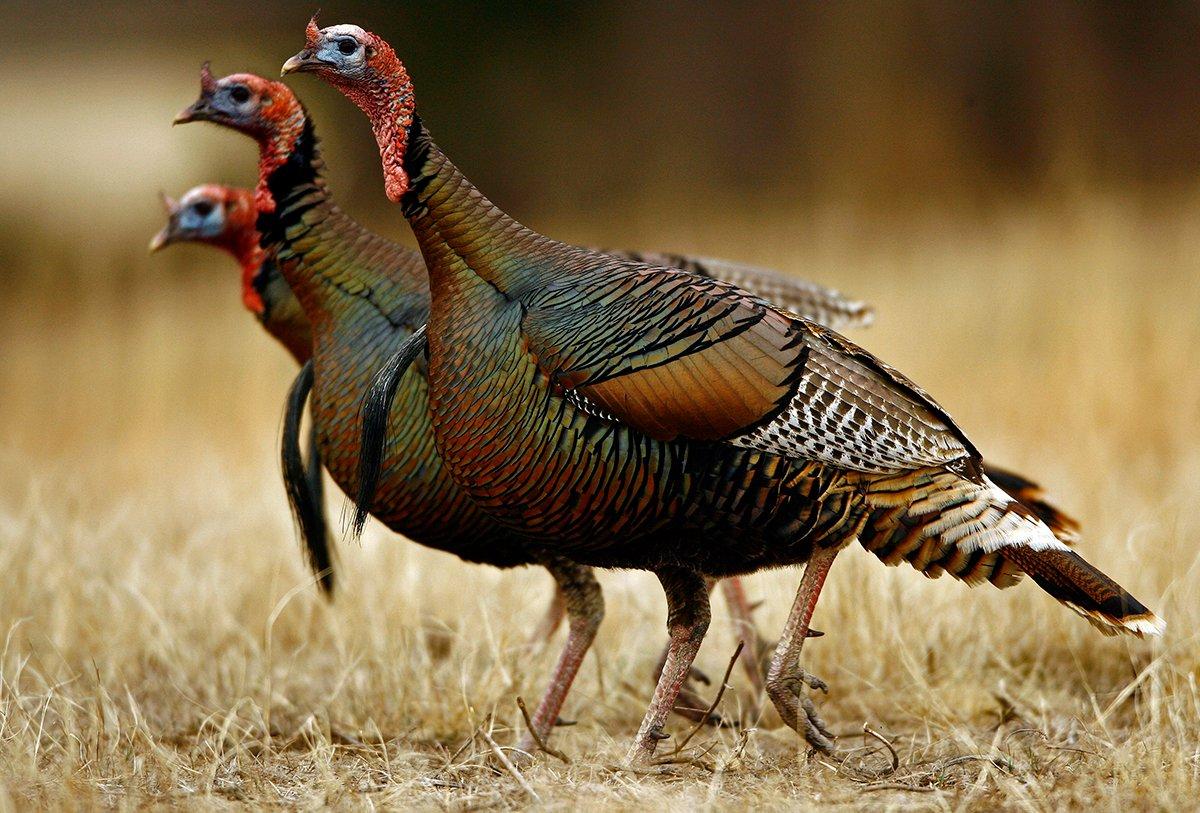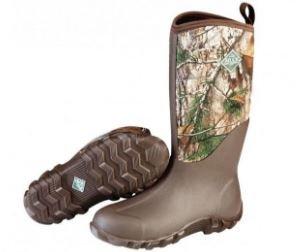Big Autumn Gobblers Need Serious Tactics
Pattern fall longbeards? Scatter them for the calling advantage?
Either way, you wait. Check out these tips to get one by the feet.
Big gobblers flush far. Sometimes they take their time regrouping, but other instances prove otherwise. Can't call them in? Can't wait that long?
You can wait for patterned gobblers to arrive at your setup location, a tactical advantage gained through scouting and woodsmanship. You can find and flush longbeard flocks too, then try and call them back to your position. You might also shoot a patterned gobbler, and scatter his running buddies in the process. Sit tight if you're hunting with a partner. Those birds will most likely return to the site where they were rudely scattered.
The idea of flushing fall gobbler flocks is based on the notion you want to call the turkey to your setup after the birds have been scattered. But yeah, if you've patterned or happened into fall turkeys — and a bird is in range and you want it — sure, take the shot. You choose.
Often though, you encounter a flock on the edge of range. What do you do then? That's when you might need to flush them. This strategy is based on the simple fact that turkeys are gregarious, including fall gobblers, and the hunter's hope that the flock will want to regroup.
There's a difference between a good and bad flock flush, as all veteran fall turkey hunters know. In a lousy break, smaller groups of birds stay together. Sending several gobblers one way, and several more another doesn't qualify as a good break. This puts you at a tactical disadvantage. In one done right, turkeys fly off or run in all directions. They'll likely want to regroup.
You just have to wait and see.
Bonus read: How to Hunt Fall Turkeys
Call Waiting
Gobbler yelps are deeper and have a slower cadence than the higher-pitched hen yelps we often use in the spring. In my fall hunting experience, friction calls imitate gobbler yelps best, though resonant diaphragms also work.
Often three deeper, slower yelps — yawp, yawp, yawp — will get a super jake (a year-and-one-half-old male turkey) or mature gobbler's interest. Like the cluck, it's a questioning call that seems to say, Where are you? I'm right here.
In the spring, a gobbler is primarily attempting to call hens to his roosted or ground-standing position. In the fall and winter, he's declaring his proud presence, and possibly gobbling during daily efforts to maintain pecking-order status, or move ahead in rank, as he fights other male birds. If you raise a gobbler with a cluck, then start yelping at a bird, which responds to you, try gobbling at that turkey.
As slate yelping for gobblers goes, run your striker closer to the call's centerpoint than the rim. While holding the peg like a pen, draw it toward the call's middle with the one-two-three yelping rhythm of a gobbler. Experiment with strikers on your call of choice.
Realtree Turkey Calling Video
Gobbler calls, when used sparingly, can draw responses from adult toms, super jakes, and young male turkeys. If you've broken the flock on foot, or with a dog where legal, listen as the gobblers regroup. Often they'll gobble when lost or looking for other turkeys. Call as they do.
Aggressive purrs, cutting, and gobbling can interest male birds into approaching your position. Just as a crowd gathers during a street fight to see what's going on, gobblers will investigate the location where such sounds indicate fighting turkeys.
You can hold the lid of your cap, and smack it against a tree or your leg to imitate wings colliding as you purr, cutt, (fast clucking and yelping), and gobble — so long as the turkeys are out of sight, and won't chance at seeing your movements.
You've Scattered a Flock, but . . .
How long should you wait? Six tips follow here.
- If you've located fall longbeards on the roost, listen to them call while still in the trees. Don't be surprised if you hear gobbling and of course gobbler yelping.
- Listen to them fly down, punctuated by the sound of beating wings and feathers raking tree branches. Call sparingly, but watch constantly. Listen for clucks. Key on movement, and study the woods in the direction turkeys flew.
- If you've flushed longbeards, and feel it's a good break (flocked turkeys scattered in all directions) you should essentially camp out as they say. Put in your time. There's a reason they ran together in the first place. They'll want to regroup. Maybe it'll happen within the hour; or several hours. Maybe you'll have to wait until fly-up time.
- If the scatter was good, and they still haven't returned to the flush site, get back there the next morning if you can. This time it might just happen faster.
- If the original flush was competent, but not the best, it might be a matter of reflushing gobblers if you can (a dog, where legal, might help), or simply moving on to hunt other turkeys. Return there another day after the slate is wiped clean, and try them again.
- If you know where autumn longbeards roost, and where they feed, simply establish your setup in the zone between where they sleep and eat; again, wait it out — notice a theme here?
As fall longbeards go, you're never more on turkey time — meaning they set the pace of the game, and not you. Be patient. Enjoy it all, even the waiting part.
Go here for more Realtree turkey hunting.
Follow us on Facebook.
[Editor's note: This Realtree.com turkey blog post was first published Sept. 24, 2016.]








